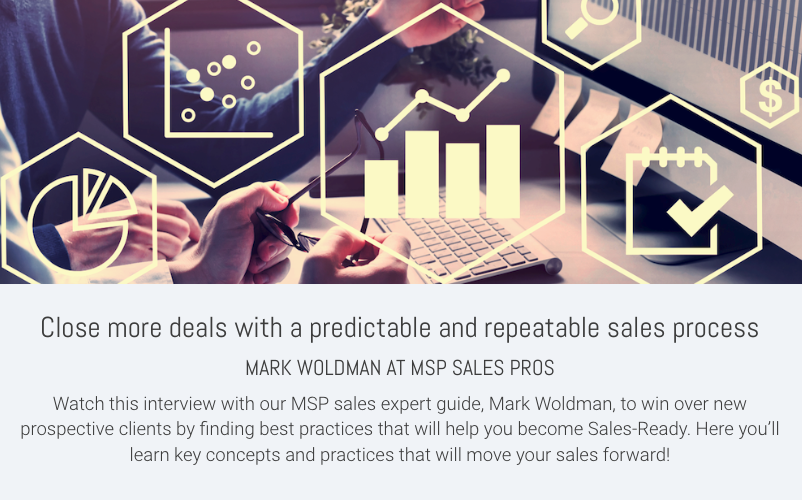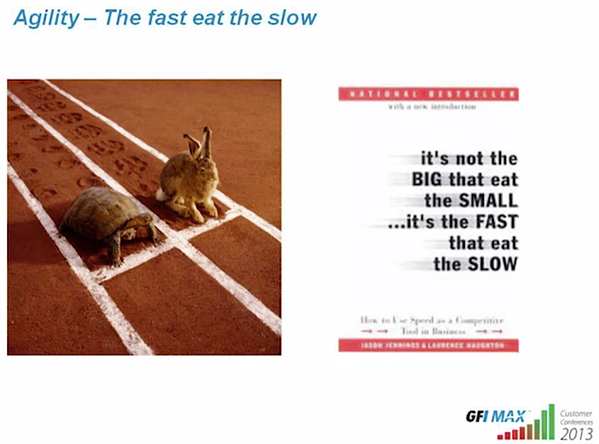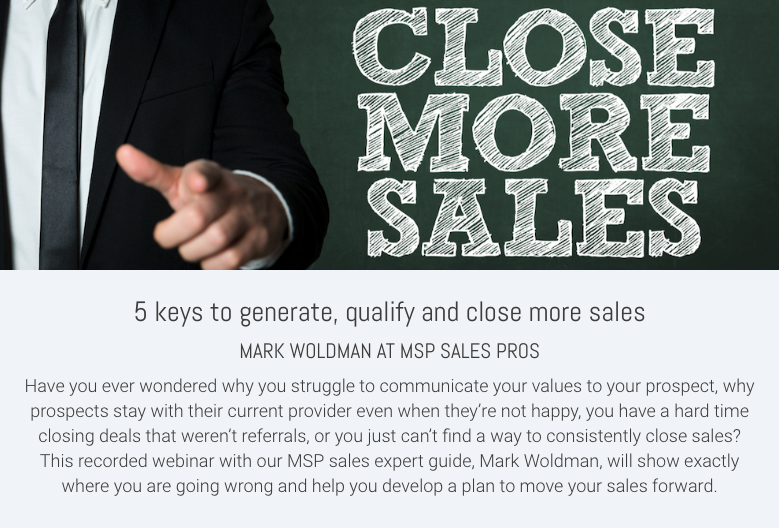
MSP 1.0 is not widespread yet as a business model, and there is already the new 2.0 model.
What are the key differentiators between the two models? The following will refer to an average MSP 1.0 and MSP 2.0 practice.
We are assuming that the MSP 2.0 model is heavily supported by an MSP 2.0 framework, which is crucial. The differentiations may seem simplistic, but our aim is to show the possible limitations and challenges of the MSP 1.0 model, and the opportunities of the MSP 2.0.
Keep in mind that MSP 2.0 is not a substitution of the MSP 1.0 model. It is an expansion. You can move your existing 1.0 services forward, but with 2.0 as a companion the new options are going to be very promising.
Tech Value vs. Business Value
Giving someone a technology solution is not necessarily giving business value. The technology solution is only a part of the complete solution. If it is an ERP, the software is just part of the internal processes, interactions etc. If it is an email system, it’s also integral to the entirety of company communications.
The business value of an ERP project to is to enhance the efficiency of their processes, through automation and streamlining. The business value of the email system is an effective, well-processed, internal and outside communication system with secure limited access.
The technology is 30%; the rest is HR, management, controlling, etc. With MSP 1.0 usually the MSP does only the technology part of the project. In MSP 2.0, they become the leader of these projects; evaluating vendors, conducting the project management and quality control, as well as implementing the technology. This is a very visible difference in value to the customer.
Techy Slot vs. Trusted Advisor
The general limitation of the MSP 1.0 is that you are a technology service provider, and you provide value by providing technology. Yes, we know, this includes you providing business sense for the different solutions, but you don’t usually receive the following call: "Hi, we need to expand our operation abroad, and we need your expertise." or "We want to penetrate the new market segment and establish a sales representative system. Let’s figure it out together."
More likely it’s in the form of “‘You guys know any accounting packages which can handle foreign currencies?', or "Can you guys deploy a server for MS Dynamics CRM to us?" You’re pegged into the "Techy slot."
That’s a noble role to fill if you want it, but you will find yourself waiting for them to realize they need something concerning technology - it limits your opportunities tremendously.
Instead with MSP 2.0 you give them business value, which means you are there if they have a major challenge, development, or other change in their business. You stay current with their vision and direction so you are able to become a Trusted Advisor, or virtual Chief Information Officer (a vCIO). You’re already there well before the issue with technology arises, and you’re able to alert them to an IT challenge and background support for their decisions. This vastly expands your billable opportunities.
Thin Focus vs. Broad Focus
In MSP 1.0 you focus on technology, and your part of the client side. Maybe you give them quarterly planning sessions, even some kind of strategy, but the scope of these projects is limited to your service scope. In MSP 2.0 you think of the entire operation holistically from the client's perspective.
You re-think your MSP 1.0 service as one piece of the pie, and now manage all the vendors, third parties, and even the internal IT team to some extent. You negotiate the support contract for the ERP vendor, sign the bill of the telco company and so on. Your focus is on the global value creation of the IT, not just the MSP 1.0 scope.
Low Level vs. High Level
Alistair Forbes, General Manager of GFIMAX is presenting the Concept publicly first

With this in mind you can see that the MSP 1.0 focuses on technology and low level execution. MSP 2.0 focuses more on high level management. Don’t think of one as better than the other, but rather as models with different scope and approach.
Most of the time, the low level ground work isn’t visible to the C level executives. They are not able to measure and evaluate costs. In high level work, you are dealing with them personally and you help them with their problems. Your visibility is entirely more significant.
High vs. Low Acquisition Cost
With MSP 1.0 you’re often being summoned by a client with some painful problem. If they do not have IT related issues, it can be difficult to convince them to move forward. Also since other problems will keep arising at unpredictable and distinct times, you can’t stay connected with the prospect and ready when they have the next painful issue. It’s necessary to keep the relationship going for a long time in order to be visible and trusted to let them know of impending problems to which you have solutions.
The process of starting a business can be quite slow and unpredictable. On the other hand, MSP 2.0 gives a solution to a general problem, and is not dependant on big problems and imminent pains. You are able to start the conversation any time. Reframing this approach will lead to closing more deals. MSP 2.0 means you can start a basic service and as problems and opportunities arise you can upsell your higher value MSP 2.0 services.
Hard to Acquire vs. Unique Value Proposition
The other sales-related problem in MSP 1.0 is not just the closure ratio and the long cycle, but the effort needed. Usually the entry barrier is very high. If there is another MSP vendor, even a poor performer, you have to be able to prove your service is better at the same price, and usually you have to bear some part of the switchover costs. This means a fight over minimal margins.
In MSP 2.0 your service is of a higher level with a very Unique Value Proposition. It does not really matter what the existing situation is on the low level. You can offer your services in a white space, without internal competition. This makes the process easier, without sacrificing the profits, and without high switching costs. Of course still if you are competing with any MSP they will be seen as redundant quickly.
Pushy Sales vs. Consultative Sales
MSP 1.0 is a quite competitive place to be, so sales tactics can be pushy with practiced sales techniques, closing strategies, and unnatural communication. It reduces the comfort of the prospect and erodes trust, because you need to talk them into something.
Immediate solutions to real problems are still in play, but this occurs less and less as the market saturates.
In MSP 2.0 with 7C, the sales technique is different: a consultative sales approach. You get to know them in a business and IT perspective, in casual meetings with questions, helping you and them both understand their situation with a questionnaire-based benchmark and report, conduct a workshop, and create an action plan.
The more consultative experience shows your value from the get-go. It’s also more natural, as you can demonstrate your valuable expertise in a formatted way and garner trust during the sales process.
No MSP Sales Process vs. Predictable MSP Sales Funnel
Usually smaller IT managed services providers don’t have any sales oriented people, so the sales process is absent and the acquisition and the upsell unpredictable. Even more mature mid-size IT companies lack a streamlined, well-controlled, transparent sales funnel with all the metrics and motivation for the salesforce.
MSP 2.0 with 7C IT management framework is both the sales funnel and the consultative sales process. If you have a clear message for the audience, the inbound marketing is easier. You have an inbound marketing tool, a discovery tool, questionnaire, analysis, report, workshop, action plan builder and first quarterly plan.
This sales process will identify the necessary relationships, rationally spread the responsibility and clarify accountability. Also, because the process is well-defined, you are able to easily educate the client for more predictable results.
You can quickly implement the funnel as an inbound marketing campaign, and expect new clients in 4-6 weeks. Even an inside salesperson can acquire good quality, targeted prospects in 2-3 reframing workshops, which, with a 50% closure ratio is 4-6 new clients every month.
Low CEO Awareness vs. High CEO Awareness
As we have seen before, general awareness of the MSP 1.0 services is quite low. Usually during the reframing workshop with existing clients, it turns out that they don’t know what you do on a weekly or monthly basis with their back-ups, policies, and so on.
You may have discussed it with them and they may have nodded to do it, but these don’t stay front of mind, especially if you are working so well that you avoid outages or firefights, and completely disappear. In MSP 2.0 with 7C, you are working with the CEO directly.
You solve their business-related problems, gather information for them to help guide their decisions, lead their virtual IT department with all the vendors and internal IT staff, and report to the CEO directly. This greatly enhances your visibility and awareness of the CEO as to what it is you do and how much value you actually deliver. It’s a different relationship, trust, and respect level.
Slow Progress vs. Immediate Results
Although managed services providers usually have a wide portfolio of services, the client often signs up for a limited part of it, and it’s a very slow process to upsell all the great new services. Why? MSPs are not really proactive, and the whole portfolio is rarely known as part of the client’s business lexicon.
The client sees separate services instead of the big picture you can bring. With the 7C MSP 2.0 this is different. It’s much easier for the client to draw a development roadmap for 1-2 years, and execute the development plan with the MSP, because you put your and other IT services into their business context.
You are able to gradually raise the maturity of the client in a measurable, accountable journey. This gives you a faster, more aligned process to grow on the client side. Everything starts with a very solid 1st quarterly plan. Executing it flawlessly will open the door to further development projects.
Commodity vs. Margin
Alistair Forbes, General Manager of GFIMAX is presenting the Concept publicly
Because the MSP 1.0 market is now so saturated, the competition is tight, vendors deal directly with clients, and services are in very tough markets. This is called a communization, where, at the end, services are differentiated only by price.
To avoid the communization and avoid lower margins and price reductions, you have to change or extend your model. MSP 2.0 with 7C provides the client unique benefit and business context, and a very powerful weapon against their competition, leaving you in a very unique position.
This way, you are able to sell your existing offers at a higher price, while also more streamlined, and very profitable. Also, because the MSP 2.0 model is very new and rare, it’s seen as a high value service worth a higher price.
Avarage Brand vs. Remarkable Brand
As a local technology company, it can be very hard to be seen as a remarkable brand. With all the communication, service delivery, and collaterals, 100% alignment is needed to give a consistent brand feeling. You have to have a very unique value proposition where everybody knows what’s behind it. Volvo is a safe car, Starbucks is a great place to relax, Apple is a great user experience.
MSP 1.0, doesn’t include these engaging messages. MSP 2.0 with 7C, it’s different. You can show a very stable user experience during the sales process, your messages, the service delivery, and communications. It is fundamentally more professionalism and inclusive while maintaining a friendly, down-to-earth feeling. Your brand will emerge and become remarkable locally with high referral rates and powerful communication.
Cloud risk vs. Could proof
The Cloud is disrupting the MSP 1.0’s main business and revenue stream, its infrastructure projects and support. All related services are changing, as well as the consumption rates. This is hurting MSPs. In MSP 2.0 with 7C, the cloud model is actually favourable. You can use the growing complexity and business impact of the several different cloud-based applications and services to sell to the management layer on the client side.
Mixing Cloud applications with on-site integrations and reliability concerns means security is a big issue. You can control the whole ecosystem and build a solid service, managing IT at a high level and ensure departments, technologies, approaches, and models of delivering IT are completely in harmony regardless of the client’s particular business model.


